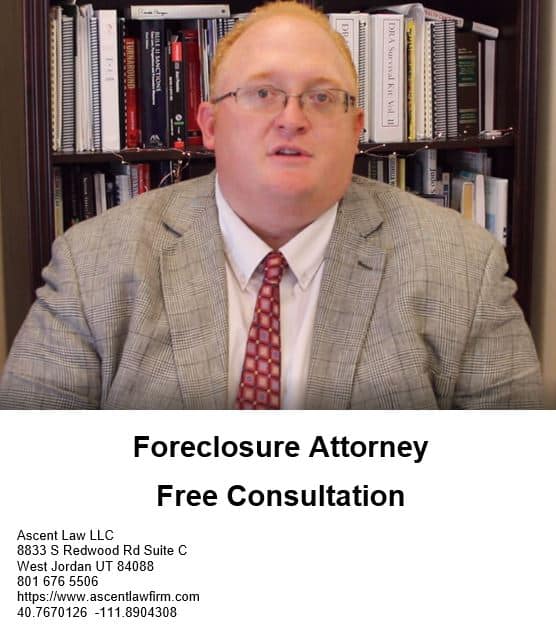
Private placement is a common method of raising business capital by offering equity shares. Private placements can be done by either private companies wishing to acquire a few select investors or by publicly traded companies as a secondary stock offering. When a publicly-traded company issues a private placement, existing shareholders often sustain at least a short-term loss from the resulting dilution of their shares. However, stockholders may see long-term gains if the company can effectively invest the extra capital obtained and ultimately increase its revenues and profitability. Private placement is an issue of stock either to an individual person or corporate entity, or to a small group of investors. Investors typically involved in private placement issues are either institutional investors, such as banks and pension funds, or high-net-worth individuals. A private placement has minimal regulatory requirements and standards that it must abide by. The investment does not require a prospectus and, quite often, detailed financial information is not disclosed. For an individual investor to participate in a private placement offering, he must be an accredited investor as defined under regulations of the Securities and Exchange Commission (SEC). This requirement is usually met by having a net worth in excess of $1 million or an annual income in excess of $200,000.
Private Placement and Share Price
If the entity conducting a private placement is a private company, the private placement offering has no effect on share price because there are no pre-existing shares. With a publicly-traded company, the percentage of equity ownership that existing shareholders have prior to the private placement is diluted by the secondary issuance of additional stock, since this increases the total number of shares outstanding. The extent of the dilution is proportionate to the size of the private placement offering. For example, if there were 1 million shares of a company’s stock outstanding prior to a private placement offering of 100,000 shares, then the private placement would result in existing shareholders having 10 percent less of an equity interest in the company. However, if the company offered an additional 1 million shares through the private placement, that would reduce the ownership percentage of existing shareholders by 50 percent.
Motivation for Private Placement
The dilution of shares commonly leads to a corresponding decline in share price at least in the near-term. The effect of a private placement offering on share price is similar to the effect of a company doing a stock split. The long-term effect on share price is much less certain and depends on how effectively the company employs the additional capital raised from the private placement. An important factor in determining the long-term share price is the company’s reason for the private placement. If the company was on the verge of insolvency and did the private placement as a means of avoiding bankruptcy, it would not bode well for the company’s shareholders. However, if the motivation for the private placement was a circumstance in which the company saw an outstanding opportunity for rapid growth that simply required additional financing, then the eventual extra profits realized from the company’s expansion may push its stock price substantially higher. Another possible motivation for doing a private placement could be that the company cannot attract large numbers of institutional or retail investors. This might be the case if the company’s market sector is currently considered unattractive, or there are only a few analysts covering the company. At the Investment Risk Analysis stage, the investor will determine a credit rating for the company issuing the private placement, which reflects how capable the issuer is of making interest and principal payments. This process is similar to how rating agencies determine ratings for public bond issuers.
The lender will ask questions such as:
• How stable are the company’s revenues and earnings?
• How stable are input costs and operating expenses?
• How stable is the management team and how deep is the bench?
• Who are the company’s main competitors and what are the competitive dynamics of the industry?
• Who are the main customers, and is there any significant customer concentration?
• Is the company profitable? Why or why not?
• What is the long-term target debt to equity ratio?
• What is the long-term target debt to earnings ratio?
• What other debt obligations are outstanding?
• What is their track record for paying creditors?
• What is the company’s long-term growth strategy?
After answering these questions and performing a full analysis of the company’s financials, an investor can determine how much risk they feel is associated with providing capital to the company. Generally, the higher the risk, the lower the quality rating.
Next, during the Pricing step, the investor determines what interest rate is needed to compensate for the associated risk. Private placements are priced similarly to public securities, where pricing is typically determined by adding a credit risk premium (or spread) to the corresponding U.S. Treasury rate.
Once the company and the investor agree to a spread, they move to the Rate Lock step. This is when the private placement investor and the company agree to lock-in the interest rate (or coupon) based on the agreed upon spread and the prevailing U.S. Treasury rate at a specific day and time. For non-USD financing, the multi-currency swap would also be executed at this stage.
The final step, closing, is the formal exchange during which the actual transfer takes place between the company and the lender; the issuer transfers the security that was offered to the investor in exchange for the capital the investor agreed to pay for it. The steps to closing very much resemble the process for establishing a line of credit with banks.
A private placement memorandum is a disclosure document that is drafted by an issuing company and given to investors for their capital (hopefully). The offering memo will also discuss the management team and their skills, as well as the risk factors of the company. It is important to list the risk factors of the business so that investor can make an educated choice regarding investing. In addition, tax implications of the investor will also be discussed, as well as various rules and regulations involving foreign investment. The private placement memorandum is an opportunity to tell the story of the company, its product and service offerings, the benefits to investors, long term payout and strategy and more. Giving a potential prospect an investor ready private placement memorandum is good business practice and looks professional. A private company is a firm held under private ownership. Private companies may issue stock and have shareholders, but their shares do not trade on public exchanges and are not issued through an initial public offering (IPO). As a result, private firms do not need to meet the Securities and Exchange Commission’s (SEC) strict filing requirements for public companies. In general, the shares of these businesses are less liquid, and their valuations are more difficult to determine.
Types of Private Companies
• Sole proprietorships put company ownership in the hands of one person. A sole proprietorship is not its own legal entity; its assets, liabilities and all financial obligations fall completely onto the individual owner. While this gives the individual total control over decisions, it also raises risk and makes it harder to raise money. Partnerships are another type of ownership structure for private companies; they share the unlimited liability aspect of sole proprietorships but include at least two owners.
• Limited liability companies (LLCs) often have multiple owners who share ownership and liability. This ownership structure merges some of the benefits of partnerships and corporations, including pass-through income taxation and limited liability without having to incorporate.
• S Corporations and C corporations are similar to public companies with shareholders. However, these types of companies can remain private and do not need to submit quarterly or annual financial reports. S corporations can have no more than 100 shareholders and are not taxed on their profits while C corporations can have an unlimited number of shareholders but are subject to double taxation.
Why Companies Stay Private
The high cost of undertaking an IPO is one reason why many smaller companies stay private. Public companies also require more disclosure and must publicly release financial statements and other filings on a regular schedule. These filings include annual reports (10-K), quarterly reports (10-Q), major events (8-K) and proxy statements. Another reason why companies stay private is to maintain family ownership. Many of the largest private companies today have been owned by the same families for multiple generations, such as the aforementioned Koch Industries, which has remained in the Koch family since its founding in 1940. Staying private means a company does not have to answer to its public shareholders or choose different members for the board of directors. Some family-owned companies have gone public, and many maintain family ownership and control through a dual-class share structure, meaning family-owned shares can have more voting rights. Going public is a final step for private companies. An IPO costs money and takes time for the company to set up. Fees associated with going public include an SEC registration fee, Financial Industry Regulatory Authority (FINRA) filing fee, a stock exchange listing fee and money paid to the underwriters of the offering.
Advantages of a Private Limited Company
A private limited company (pvt ltd company) is the most common vehicle to carry on business for an entity intending to make a profit and enjoy the benefits of an incorporated entity, particularly limited liability. Besides, limited liability and minimal statutory compliances, pvt ltd companies offer the following advantages:
Separate Legal Entity
An entity means something which has a real existence; a thing with distinct existence. A company is a legal entity and a juristic person established under the Act. A juristic person is a person who is not a natural person or human being. Therefore a company form of organization has wide legal capacity and can own property and also incur debts. The members (Shareholders/Directors) of a company have no liability to the creditors of a company for such debts. Hence, a pvt ltd company is a legal entity separate from that of its members.
A company has ‘perpetual succession’, that is continued or uninterrupted existence until it is legally dissolved. A company, being a separate legal person, is unaffected by the death or other departure of any member but continues to be in existence irrespective of the changes in membership. Perpetual succession is one of the most important characteristics of a company.
Limited Liability means the status of being legally responsible only to a limited amount for debts of a company. Unlike proprietorships and partnerships, in a limited liability company the liability of the members in respect of the company’s debts is limited. In other words, the liability of the members of a company is limited only to the extent of the face value of shares taken up by them. Therefore, where a company is limited by shares, the liability of the members on a winding-up is limited to the amount unpaid on their shares.
Shares of a company limited by shares are transferable by a shareholder t any other person. The transfer is easy as compared to the transfer of interest in business run as a proprietary concern or a partnership. Filing and signing a share transfer form and handing over the buyer of the shares along with share certificate can easily transfer shares.
A company being a juristic person, can acquire, own, enjoy and alienate property in its own name. No shareholder can make any claim upon the property of the company so long as the company is a going concern. The shareholders are not the owners of the company’s property. The company itself is the true owner.
To sue means to institute legal proceedings against or to bring a suit in a court of law. Just as one person can bring a legal action in his/her own name against another in that person’s name, a company being an independent legal entity can sue and also be sued in its own name.
In the company form of organization it is possible for a company to make a valid and effective contract with any of its members. It is also possible for a person to be in control of a company and at the same time be in its employment. Thus, a person can at the same time be a shareholder, creditor, director and also an employee of the company.
A company enjoys better avenues for borrowing of funds. It can issue debentures, secured as well as unsecured and can also accept deposits from the public, etc. Even banking and financial institutions prefer to render large financial assistance to a company rather than partnership firms or proprietary concerns. The growth of trade and business led to many problems that traditional forms of business did not solve. For example, the unlimited liability feature of a sole proprietorship form of business resulted in people forming partnerships, but even that proved to be too inadequate and risky. This is when the concept of companies emerged, and private companies form of business is the oldest example of it.
The Companies Act has provided certain privileges and exemptions to private companies that public companies do not possess. These privileges accord them greater freedom in conducting their affairs. Here are some examples of them:
• No need to prepare a report for annual general meetings.
• Only 2 minimum directors required.
• No need to appoint independent directors.
• They can adopt additional grounds for the disqualification of directors and vacation of their office.
• They can pay greater remuneration to their directors than compared to some other types of companies.
Limitations of Private Companies
Despite all the advantages they offer, private companies also have the following limitations:
• Private companies cannot freely transfer shares to the public.
• They find it more difficult than public companies to access external financial support.
• Shareholders have greater risks and liabilities.
Free Initial Consultation with Lawyer
It’s not a matter of if, it’s a matter of when. Legal problems come to everyone. Whether it’s your son who gets in a car wreck, your uncle who loses his job and needs to file for bankruptcy, your sister’s brother who’s getting divorced, or a grandparent that passes away without a will -all of us have legal issues and questions that arise. So when you have a law question, call Ascent Law for your free consultation (801) 676-5506. We want to help you!
8833 S. Redwood Road, Suite C
West Jordan, Utah
84088 United States
Telephone: (801) 676-5506
Recent Posts
Foreclosure Lawyer North Salt Lake Utah
Custody Lawyers In Utah County
{
“@context”: “http://schema.org/”,
“@type”: “Product”,
“name”: “ascentlawfirm”,
“description”: “Ascent Law helps you in divorce, bankruptcy, probate, business or criminal cases in Utah, call 801-676-5506 for a free consultation today. We want to help you.
“,
“brand”: {
“@type”: “Thing”,
“name”: “ascentlawfirm”
},
“aggregateRating”: {
“@type”: “AggregateRating”,
“ratingValue”: “4.9”,
“ratingCount”: “118”
},
“offers”: {
“@type”: “Offer”,
“priceCurrency”: “USD”
}
}
The post Can A Private Company Do Private Placement? first appeared on Michael Anderson.




